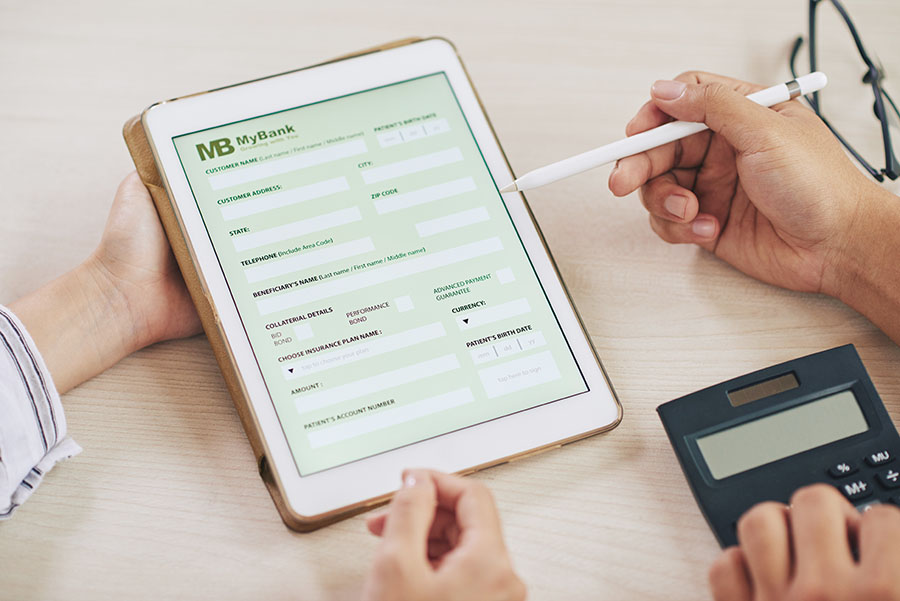In the fast-paced healthcare environment, where patient care and outcomes take center stage, it might be easy to overlook the crucial significance of financial management. However, failing to manage the financial aspect within your healthcare organization effectively may jeopardize the viability and sustainability of your company.
That’s why ensuring optimum revenue cycle management (RCM) with close monitoring of key performance indicators (KPIs) ensures smooth operations and solid profits, ultimately supporting your medical clinic’s ability to deliver quality patient care. Employing the best healthcare revenue cycle KPIs can be your new strategy for gaining valuable insights into performance and weaknesses, helping you make informed decisions to drive success and underlying growth.
In this article, we’ll delve into the critical importance of revenue cycle KPIs within the healthcare industry, exploring their definition and significance. Discover the most effective KPIs to help you reach your medical billing metrics and learn more about the best practices for selecting and implementing KPIs to monitor organizational performance. Lastly, we’ll also elaborate on how continuous improvement initiatives can be driven through the insightful analysis and utilization of KPI data.
Understanding Healthcare Revenue Cycle KPIs
So, what are healthcare revenue cycle KPIs?
Revenue cycle management and medical billing form the cornerstone of any healthcare organization’s operation. When optimizing RCM processes within your healthcare facility, partnering with a proficient service provider like CLICKVISION BPO can significantly enhance your operational efficiency.
Our teams offer comprehensive and reliable solutions tailored to streamline medical billing, coding, and claim reimbursement, ultimately ensuring accurate patient billing and timely payment collection. Without a robust process in place, your facility’s performance may suffer and struggle to perform at its full potential.
Therefore, understanding what key performance indicators are is critical for optimizing your operations and maintaining your clinic’s financial health. Essentially, these indicators are specific, measurable performance metrics that help you track your financial performance over time. They offer a means to measure RCM, providing valuable insights into the efficiency of billing processes and performances, claim reimbursement rates, and areas for improvement, enabling you to adjust your strategies.
Additionally, KPIs can also enable facilities to benchmark their performance against industry standards, fostering continuous improvement and competitive positioning within the healthcare landscape. Through rigorous monitoring and optimization, KPIs can help you enhance your overall revenue cycle performance, ultimately leading to improved financial health and operational efficiency within your organization.

Source: freepik.com
Selecting Effective KPIs
Selecting the right KPIs for your healthcare organization is paramount to driving success and ensuring efficient resource allocation. Your final KPIs should seamlessly align with organizational goals and reflect performance objectives, serving as tangible markers of progress toward strategic targets. Moreover, selecting effective KPIs that provide actionable insights for improvement will enable you to make informed strategic decisions and facilitate proactive adjustment measures.
But how do you select the right types of healthcare revenue cycle KPIs?
When selecting KPIs for healthcare cycle management involves a strategic approach tailored to your organization’s specific needs and goals. Firstly, it’s essential to identify your performance objectives, aligning the KPIs with overarching strategies to ensure they contribute to organizational success. Secondly, considering your target audience helps KPI selection, ensuring relevance and competitiveness. Thirdly, prioritizing metrics that directly impact business outcomes, like patient satisfaction, revenue generation, and operational efficiency, guides your selection processes.
By adhering to these principles, your healthcare clinic can effectively leverage the power of KPIs to drive performance and achieve strategic objectives.
Key Healthcare Revenue Cycle KPIs
Before selecting healthcare revenue KPIs, it’s essential to have a comprehensive understanding of the key metrics that drive success within the healthcare industry. This entails conducting thorough research and analysis to identify which metrics have the most impact on performance and align with your business goals.
To help you navigate through the selection process, here are the best healthcare revenue cycle KPIs that will undoubtedly help you reach your medical billing metrics:
1. Days in accounts receivable (AR)
Days in accounts receivable (AR) in healthcare is a critical KPI that measures the average time it takes for your healthcare facility to collect payments from both patients and third-party insurance payers. It offers valuable insights into the efficiency of your organization’s billing and collection processes, serving as an indicator of your financial health and operational effectiveness.
High-day numbers in AR may signify a delay in payments and collections, potentially impacting cash flow and overall revenue management. Therefore, monitoring this KPI is imperative for detecting issues within the revenue cycle, enabling you to implement proactive measures to streamline procedures and enhance collection efficiency.
So, by actively managing days in AR, healthcare organizations can accelerate cash flow, reduce receivables, and ultimately improve financial health and performance.

Source: freepik.com / Photo Contributor: user17316117
2. Net collection rate
Net collection rate is another key healthcare revenue cycle KPI, providing valuable insights into revenue collection efforts, payment realization, and billing efficiency. This matric focuses specifically on revenue collected for services rendered, offering a more accurate depiction of your organization’s revenue capture capabilities.
It’s calculated by dividing the total amount of payments received by all allowed charges, excluding contractual adjustments. High net collection rates signify effectiveness in billing and collection processes, whereas low rates might indicate issues and complications with claim denials or underpayments.
Understanding the ent collection rate KPI is essential for addressing potential issues with revenue leakage, allowing you to assess your financial performance and optimize the billing processes to maximize revenue capture. Thus, effectively monitoring this KPI can significantly impact your clinic’s financial health and sustainability.
3. Clean claim rate
The clean claim rate is a vital KPI within the healthcare revenue cycle management, representing the percentage of claims that are successfully processed and paid by third-party insurers or payers on the first claim submission. This refers to claims that are collected without encountering any errors, delays, or inquiries.
Having a high clean claim rate is indicative of streamlined coding and billing practices, reflecting the efficiency of your revenue cycle operations, where low rates might suggest inefficiencies. Therefore, optimizing clean claim rates translates to fewer claim denials, accelerated reimbursement processes, and, ultimately, improved cash flow for your clinic. It highlights the importance and adherence to coding standards, ensuring timely and accurate claims, leading to improved overall financial performance.

Source: freepik.com / Photo Contributor: syda_productions
4. Denial rate
Within the healthcare revenue cycle, denial rates present a critical metric that measures the percentage of claims denied or rejected by third-party payers. Organizations that have high denial rates may experience potential inefficiencies or errors in coding, billing, or documentation processes.
This can adversely impact revenue and operational efficiency, making comprehensive analyses essential to identify and address the root causes behind denials and implement proactive and corrective measures to optimize and address revenue cycle workflows. By conducting targeted interventions, medical facilities can mitigate financial losses, enhance reimbursement rates, and ensure smoother operations, ultimately fostering sustainable financial health and enhanced patient care delivery.
5. First Pass Yield (FPY)
First Pass Yield (FPY) in the healthcare revenue cycle, also known as throughput yield, refers to the percentage of total claims processed successfully on the initial submission without requiring any rework or correction. It measures the efficiency of billing processes by indicating how often claims are accepted without errors or issues upon the first submission.
While this KPI is relatively similar to clean claim rates, both offering crucial insights into revenue cycle performance, the main difference lies in their scope of evaluation. FPY focuses solely on the initial success rate, while clean claim rates refer to claims that are paid by insurers or payers without any additional correction or documentation required. Hence, FPY offers a broader assessment of billing accuracy and reimbursement efficiency.

Source: freepik.com / Photo Contributor: katemangostar
6. Accounts receivable aging
Accounts receivable aging, also referred to as A/R aging, is a vital tool and metric used in healthcare revenue cycle management to track the age of outstanding patients and insurance balances. It categorizes unpaid invoices based on the length of time they’ve been outstanding, typically segmented into 30-day increments.
By tracking the aging of accounts receivable, your organization can gain valuable insights into the timeliness of payment collections or issues in your revenue cycle management. Ultimately, this KPI helps you prioritize collection efforts by focusing on overdue balances that require immediate attention, enabling proactive measures to accelerate cash flow while minimizing bad debt risk.
7. The patient payment collection rate
The patient payment collection rate serves as a vital indicator of a healthcare facility’s financial health and operational efficiency, helping you measure the percentage of patient balances collected within a specified timeframe.
This key metric in healthcare revenue cycle management is calculated by dividing the total amount of patient payments processed by the total amount of patient balances owed. By evaluating the effectiveness of your patient communication strategies, payment policies, and collection efforts, the patient payment collection rate is a valuable tool to help organizations streamline revenue cycle operations and enhance overall patient satisfaction.
The formula for calculating Patient Collection Rate is:
Patient Collection Rate = Total Patient Payments Collected / Total Patient Payments Due
For example, if a healthcare organization collected $75,000 in patient payments out of a total of $120,000 due, the Patient Collection Rate would be: 0.625 or 62.5%

Source: freepik.com / Photo Contributor: pressfoto
8. Revenue cycle time
Revenue cycle time is a type of metric in healthcare administration, helping organizations measure the average duration required to complete an entire revenue cycle process from patient registration to payment collection. It offers insights into the efficiency and effectiveness of administrative workflow within your organization, identifying errors and areas for improvement.
Having short revenue cycle times indicates streamlined operations, faster reimbursement, and sustainable cash flow, ultimately improving the financial health of your medical facility.
Implementing KPI Monitoring and Reporting
Now that the key healthcare revenue cycle KPIs are clear, the next step is to effectively implement these monitoring and reporting systems in your organizational operations.
Begin by establishing clear goals and targets for each KPI. This is essential for providing direction and focus in monitoring efforts, helping you align organizational objectives with measurable outcomes. It also assists in facilitating informed decision-making and strategic planning to improve performance.
Next, utilizing technology and data analytics tools for KPI tracking automates payment collection, processing, and visualization. This enables real-time monitoring, valuable insights on areas for improvement, and enables proactive approaches for solutions and strategic implementation, empowering organizations to manage performance and drive continuous improvement.
Furthermore, regularly reviewing and analyzing KPI performance is essential for identifying trends and opportunities and detecting untapped opportunities, ensuring proactive management and optimizing outcomes.
Lastly, communicating KPI results to key stakeholders fosters transparency, alignment, and accountability, helping you drive collaborative efforts toward organization objectives.
While this takes a strategic approach, CLICKVISION BPO offers comprehensive solutions and expertise in implementing KPI strategies tailored to your medical facility’s unique needs. Our specialized services can help leverage KPIs efficiency while driving operational excellence and financial success.
Continuous Improvement Through KPIs
Beyond monitoring and reporting capabilities, KPIs offer numerous benefits for continuous improvement, including:
Minimizing revenue leakage
Tracking KPIs like net collection rate and denial rate are critical steps for detecting revenue leakage within your organization’s financial processes. Increased denial rates may indicate inefficiencies in claim management, potentially damaging your clinic and leading to substantial revenue loss over time.
However, by keeping a close eye on these KPIs, our teams can help you identify areas for improvement and implement corrective actions that will mitigate any common errors or risks that contribute to claim denials, ultimately minimizing revenue leakage.
Enhancing financial sustainability
In the healthcare administrative sector, consistently tracking healthcare revenue cycle KPIs is critical for enhancing financial sustainability. KPIs provide valuable insights into RCM performance, allowing you to identify and promptly address issues that impact your revenue, whether it’s inefficiencies in your billing process, increased claim denials, or insufficient collection efforts.
Essentially, with the best healthcare revenue cycle KPIs, you can stabilize and improve your cash flow, ultimately enabling your organization to withstand economic downturns and ensure uninterrupted service delivery, even during challenging times.
Increasing efficiency
Medical billing and healthcare revenue management form the backbone of healthcare facilities, enabling accurate billing, payment collection, and compliance with regulatory requirements. By understanding the key performance monitors and reporting systems like KPIs, you can optimize your business’ workflow and streamline revenue operations, ultimately improving efficiency and reaching financial success.
Enabling strategic decision making
Revenue cycle KPIs can also serve as valuable data points, crucial for informed decision-making and strategic planning. By leveraging insights derived from these monitoring and reporting systems, you can improve your organization’s strategic direction and optimize various aspects like resource allocation, technology investments, cost optimization, and revenue enhancement strategies.
Improving patient satisfaction
The most important yet overlooked benefit of effective KPIs is their impact on patient satisfaction. Seamless and efficient revenue cycle processes with favorable KPIs can significantly impact accuracy in billing, reduce claim denials, and foster a straightforward and transparent financial process, reducing patient frustration while enhancing their overall experience with your medical organization.

Source: freepik.com / Photo Contributor: syda_productions
Conclusion
In conclusion, healthcare revenue cycle KPIs play a vital role that extends beyond mere financial tracking. With the right KPIs in place, healthcare organizations can gain invaluable insights into various aspects of their operations that can range from billing accuracy to patient satisfaction. Equipped with this insightful data, you can make informed decisions and pinpoint areas for improvement, enabling you to strategically allocate resources to enhance your financial performance and operational efficiency.
However, it’s essential to recognize the best healthcare revenue cycle KPIs, allowing you to tailor your monitoring efforts to address specific priorities and challenges. With a nuanced knowledge and multifaceted approach, you can ensure a robust and sustainable revenue cycle for your organization.
Additionally, partnering with reliable agencies like CLICKVISION BPO can provide additional support in optimizing revenue cycle management practices and help your clinic achieve long-term financial viability. With our holistic approach, we can position your organization for success in an increasingly complex and dynamic healthcare landscape.

With a strong background in the marketing industry and healthcare leadership roles, Filip is responsible for CLICKVISIONBPO’s sales strategies and onboarding new clients. With a passion for sharing insights gained from his experience, he also shares valuable knowledge through industry related articles.
